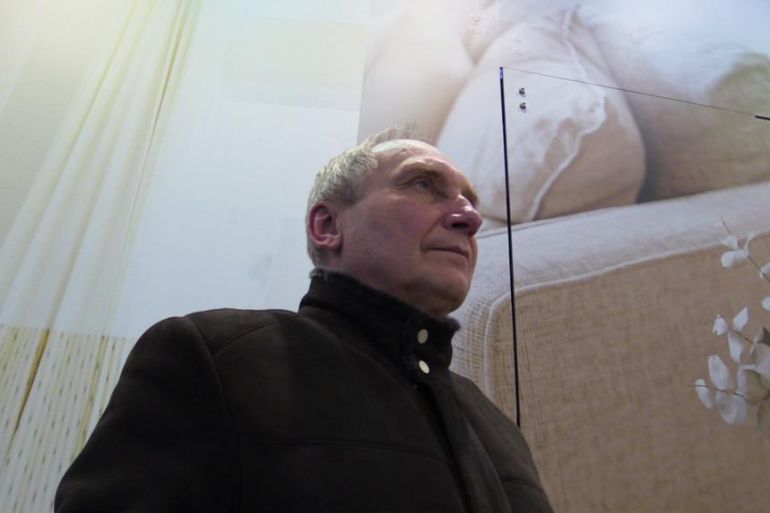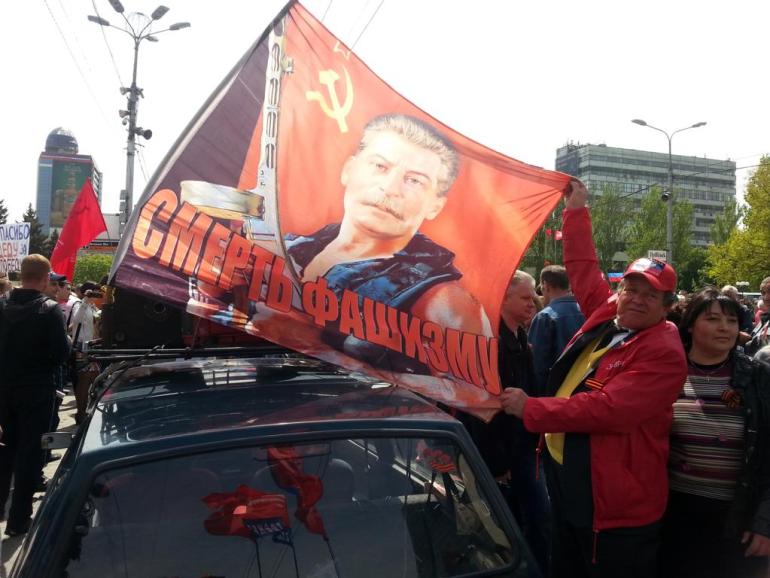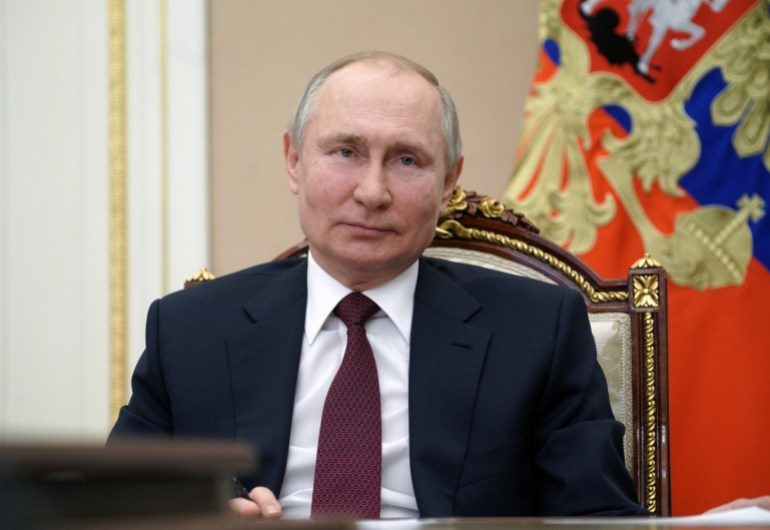‘Some stay, some die’: The horror of Ukraine’s war camps
Survivors give grisly testimony of torture, executions at war camps in eastern Ukraine’s breakaway regions.

Kyiv, Ukraine – Ihor Kozlovsky smiled happily while taking pictures of a crowd that chanted Ukraine’s national anthem in mid-April 2014.
Although there was already little to smile about in Donetsk, a multicultural city of one million in Ukraine’s southeast.
Keep reading
list of 4 itemsUS, Europe accuse Russia of blocking Ukraine war solutions
In risky move, Ukraine’s president bans pro-Russian media
ICC prosecutor seeks probes into Nigeria and Ukraine war crimes
Europe’s hottest armed conflict would soon turn it into a depopulated bastion of neo-Stalinism.
Kozlovsky, a university professor and head of the ecumenical Christian-Muslim Dialogue Center, helped organise multi-confessional “prayer marathons” for Ukraine’s unity that went on for months, even after armed pro-Russian separatists held an “independence referendum” on May 11, 2014.
Twenty months later, Kozlovsky was detained and barely survived what he, other survivors and Ukrainian officials describe as Europe’s last “concentration camps” that exist with Russian President Vladimir Putin’s tacit approval.
Hundreds are still imprisoned there without a semblance of justice, access to lawyers, contact with families and information from the outside world.
They face harrowing torture, allegedly sometimes to death, and are reportedly occasionally executed by a firing squad.
“Some stay there, some die there,” Kozlovsky, youthful and lean at 67, told Al Jazeera over a cup of tea in a glistening shopping mall in the Ukrainian capital, Kyiv, 750km (465 miles) from Donetsk.
Neo-Stalinism
In the spring of 2014, thousands of separatists aided by Russian “volunteers”, military and intelligence officers carved out two “People’s Republics” around Donetsk and the neighbouring city of Luhansk, that remain unrecognised even by their political parent, Moscow.
After driving away disorganised and badly armed Ukrainian forces, they started infighting over control of coal mines, metallurgical and chemical plants, banks and farms. They frightened civilians, allegedly expropriating businesses, valuables, cars and apartments.
They restored Soviet leader Josef Stalin’s 1937 constitution and created a sham replica of his system with one addition – the religious monopoly of the Russian Orthodox Church.

“This surrogate ideology embodies the mightiest inferiority complex, a sublimation of destitution and a constant political humiliation,” Pavel Luzin, a Russia-based analyst with the Jamestown Foundation, a think tank in Washington, DC, told Al Jazeera.
Thousands fled both regions, including those who initially supported the separatists.
Kozlovsky’s younger son and wife ended up in Kyiv, but he stayed in Donetsk with his elder, paralysed son awaiting a specialised ambulance that was supposed to take them out in the spring of 2016.
The ordeal
But in January 2016, separatists detained him, looted his apartment during a “search”, and threw him in the basement of the “State Security Ministry”.
There, detainees said, they slept on the floor or pieces of furniture, were fed once a day – if that – and had two minutes-long toilet breaks twice a day.
The torture seemed endless.
“It goes on for hours, you lose the sense of time, and the most horrible thing is that you can’t stop it,” Kozlovsky said.
“Then they take you back to the cell with a hood on your head, and you learn to walk again, because your feet and arms are black after the beating.”
Before the war, Kozlovsky authored books on Middle Eastern Christians, yoga and Buddhist philosophy.
His decades-long study of spiritual practices helped him survive – and assist other prisoners.
They claim they were beaten, waterboarded, tasered, raped with electric rods, had their teeth and nails removed, were buried alive for hours or faced mock Russian roulettes or executions.
“They put me next to a wall and fired a shot” that did not hit him, Reverend Afanasy, the bishop of Luhansk, who was detained and tortured in June 2014 after refusing to submit to the Russian Orthodox Church, told Al Jazeera.
The torture was often meaningless, because detainees face trials only if Ukrainian and Western officials report their detention.
‘Meat for torture training’
Separatists are believed to have dozens of these detention centres located in the basements of government buildings, in factories, prisons and a former art centre, and at least 3,500 people have gone through them, Ukrainian prosecutors say.
They suspect some 9,500 individuals, including hundreds of Russian nationals and volunteers from 31 nations, of committing war crimes, including torture.
Paradoxically, captured Ukrainian servicemen and pro-Ukrainian civilians faced less torture and sport no visible traces of torture ostensibly because the separatists knew they would have to be swapped one day.
But others had far less hope.
“They were nothing but meat, material for [torture] training that could be literally stamped into the ground,” Stanislav Aseyev, a journalist who spent 31 months in the camps, wrote in his 2020 book.
Putin’s silence
The Kremlin denies any role in the governance of the “people’s republics”.
In 2018, it banned Donbas, an award-winning film by Sergey Loznitsa based on amateur videos from Donetsk, including the lynching of a Ukrainian soldier.
But Moscow is well aware of the “justice system” – and even dispatches security officers to take part in interrogations and torture, survivors and officials say.
“Human rights violations, illegal arrests, falsified mock trials and improbable sentences of up to 20 years in jail based on trumped-up charges have become customary elements of Russia’s repressive policies in the occupied territories,” Emine Japarova, Ukraine’s deputy foreign minister, said in December.
Kyiv-based analyst Aleksey Kushch told Al Jazeera, Moscow still bankrolls both “People’s Republics”.
“There are direct grants and the use of Russia’s market for the movement of their goods for export [such as] coal and metal,” he told Al Jazeera.

When Ukraine started in 2017 investigating war crimes committed by “volunteers” led by renowned novelist Zakhar Prilepin, Russian Foreign Minister Sergey Lavrov said the likes of Prilepin “help normalise life in Ukraine”.
The novelist later admitted that he ordered mass killings. Earlier this year, he joined Just Russia, a pro-Kremlin socialist party.
The way out
Within months after Kozlovsky’s detention, Amnesty International, an international rights watchdog, recognised him as a prisoner of conscience and Ukraine demanded his release.
Instead, he accuses that the separatists forced him to leave his fingerprints on two grenades and charged him with “espionage” and “arms possession”.
In May 2017, a “military tribunal” sentenced him to two years and eight months in jail.
Kozlovsky was transferred to a regular prison, where conditions were much better. Inmates nicknamed him “professor”, treated him with cautious respect and asked for consultations.
After numerous petitions, including one sent by Pope Francis II to Putin, Kozlovsky became one of 74 prisoners Ukraine swapped for 306 captured separatists in December 2017.
These days Kozlovsky, like hundreds of thousands of others who escaped the separatist-controlled areas, has to deal with the rent, bills and health problems.
But he still cherishes the moment of his release.
“This is an improbable relief, this is a real liberation, when you can say what you think, you can sing what you want, you can live any way you want,” he said.